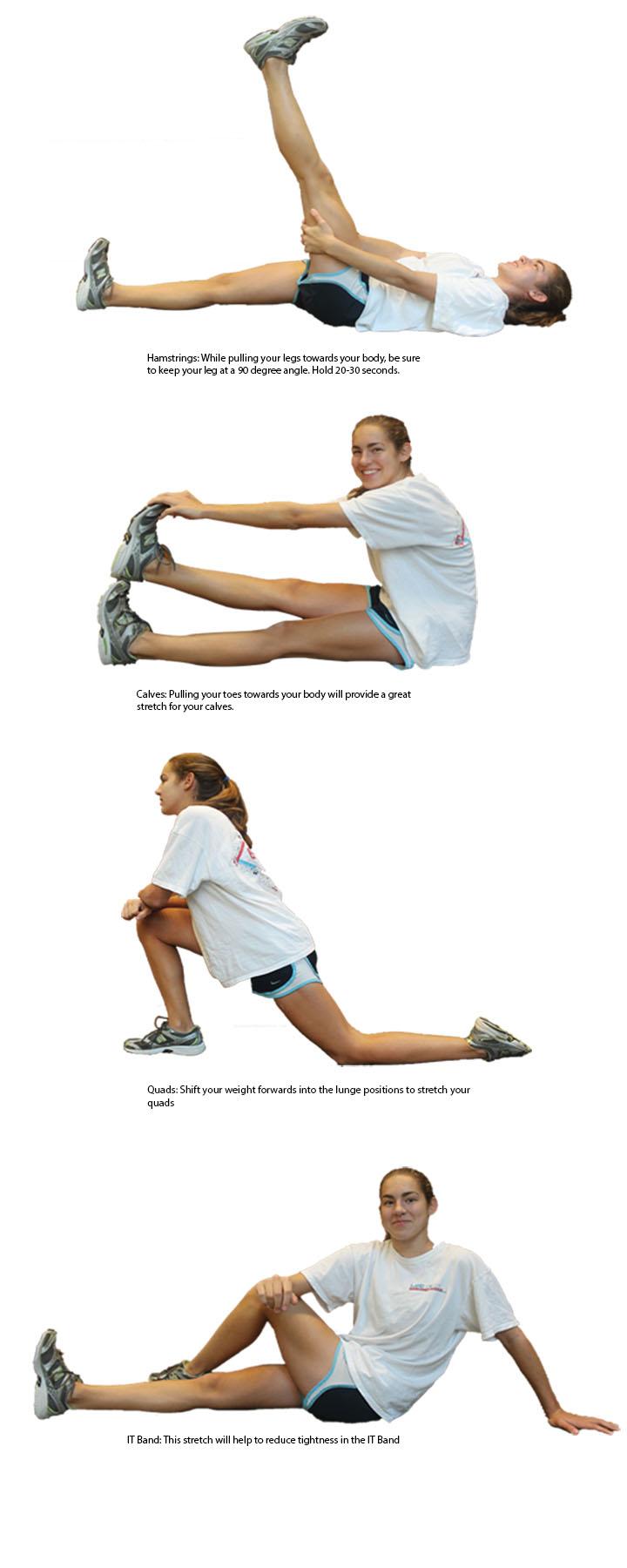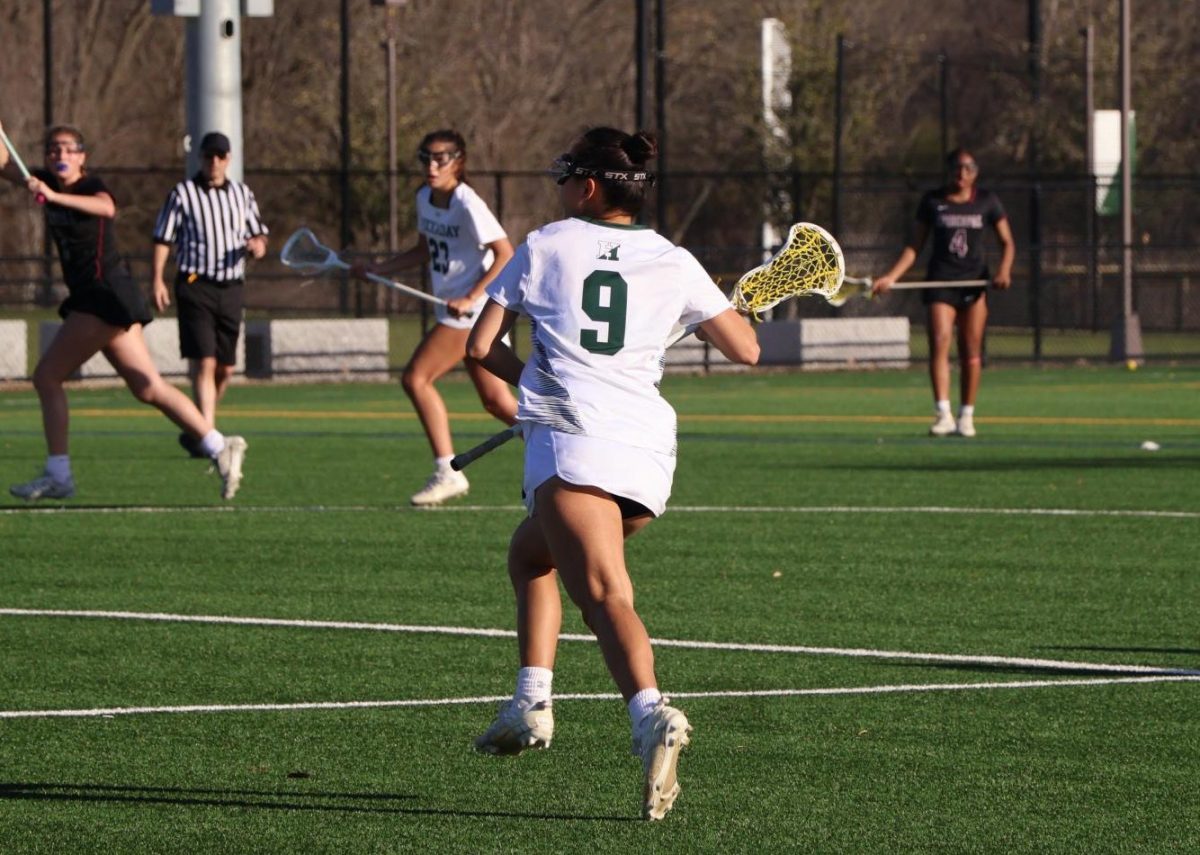Running from Injury
With a few extra precautions, athletes can prevent running injuries
As cross country season peaks in intensity with the arrival of October, runners must pay extra attention to injuries that could bring their run to a halt. But perhaps females, including the girls here at Hockaday, are at even greater risk injury than their male counterparts.
According to Hockaday trainer and athletics operations manager Jeanne Olson, professionals disagree over whether or not women are more likely to suffer running-induced injuries than men are. 
“Different professionals will say different things,” she said.
Many physicians believe that women suffer more running-related injuries than men because they have wider hips than men do. Therefore more body weight and pressure are applied to the knees, placing women at higher risk of injury.
Dale Smith, a physical therapist with Orthopedic Physical Therapy Specialists on Greenville Avenue, agrees with Olson. He explained that girls are being trained the same way as boys are, which is a problem. Because of the differences in the pelvis between the genders, girls should be trained in a different manner than boys in order to keep the stress off of their knees.
But some disagree. Sara Smith, another physical therapist with Orthopedic Physical Therapy Specialists on Greenville Avenue, believes that women don’t suffer more running-induced injuries than men. They simply report them more frequently.
“Men will wait until their legs break off,” she said (only half kidding).
She believes that the increase of women in the sports industry over the past few years has contributed to the rise in injuries for women.
It is tough to compare the rate of injury in men and women on account of something else. According to a research article in the Journal of Sports Science and Medicine, the two genders suffer different types of injuries; therefore, the comparison is not always accurate. For example, men suffer more acute injuries when women suffer from more overuse injuries.
As far as the types of injuries women most frequently suffer, Olson and Sara Smith reached a consensus. Shin splints (inflammatory condition on the front of the tibia), patellar tendonitis (inflammation of the patellar tendon) and stress fractures (small crack in bone due to overuse) in the leg and foot are most common. All of these injuries are a result of overuse.
And one thing all sports health professionals agree on is that all runners, novice or not, male or female, should take appropriate precautions to avoid injury.
Proper arch support is imperative for runners to keep their bodies free of injuries such as shin splints and stress fractures, according to the American Academy of Orthopedic Surgeons.
When you run, the pressure running up your legs is seven to nine times your body weight, therefore, proper shoes are highly necessary to keep the pressure to a minimum. It is recommended to talk to a running shoe expert or an orthopedist to determine the right shoe for you. Running shoes should always be in good condition and should be replaced once they have covered approximately 500 miles.
“When it comes to preventing injuries, shoes are always the number one,” Asha Marietta, a former member of the SMU track team and an assistant track coach at Hockaday, said.
To her, proper shoes make all the difference. Worn-out shoes lack arch support and make a runner’s body susceptible to pressure that can result in injury.
Another key rule to prevent injuries is to rest and get enough sleep.
“When you start hurting, stop,” Olson said. “You will not heal from running even more.”
Prolonged continuation of running while injured can only make matters worse.
Shin splints, for example, worsen stress fractures, resulting in an extended period of time spent in an orthopedic boot.
Certain injuries, Dale Smith said, can heal without having to cut running out completely. For example, tendonitis can be fixed as long as running time is modified and treatment is continued throughout. Stress fractures, on the other hand, will only worsen if running is continued.
Sports Medicine experts also point to a healthy diet as a necessity of staying injury free.
Competitor, an established online source for runners, suggests that runners should not stray away from foods that contain fat, which is necessary to create healthy cell membranes that resist damage when pressure is applied.
An adequate intake of calcium to maintain bone strength is also essential. Calcium rich foods such as yogurt, cheese and dark leafy greens (spinach, kale, turnips and collard greens) or a daily calcium supplement will do the trick.
Hockaday junior and cross country runner Eliza has another piece of advice: stretch. “I was pretty forgetful about stretching,” she said after she suffered shin splints last spring after not taking enough time to stretch before runs.
“Small changes can make a huge difference in preventing injury.” Olson said.
-Sydney


